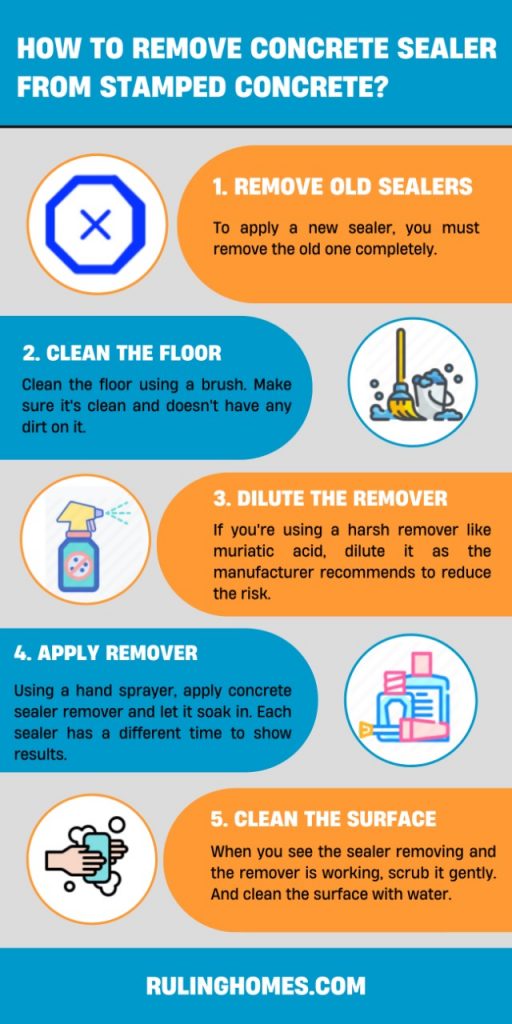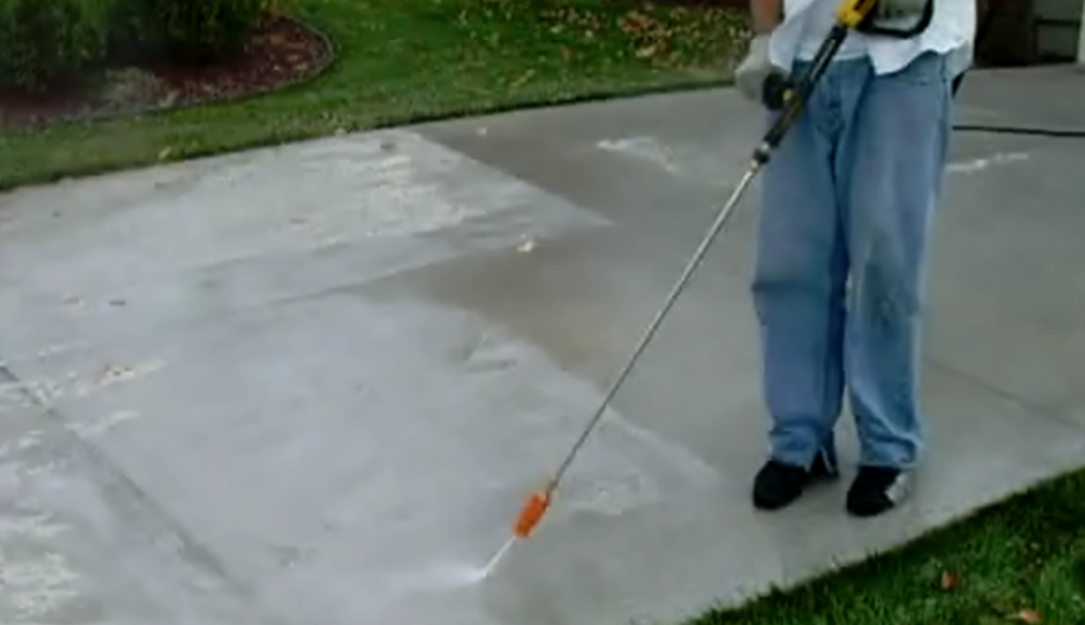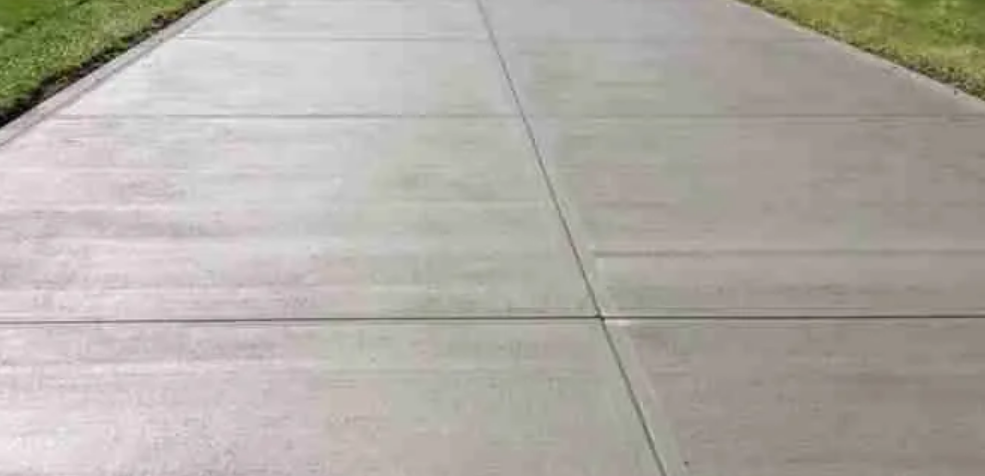To remove the concrete sealer from stamped concrete,
- First, you need to turn off all the heat sources. Pour a little amount of Xylene on an area that’s still coated by the previous concrete sealer.
- Allow the Xylene to take some rest for 20 seconds. Touch the place, and if it’s sticky or tacky, the surface was sealed with a solvent-based sealer. If the concrete isn’t tacky or sticky, the concrete was sealed with a water-based sealer.
- Then scrub the sealer with a sealer brush or broom.
This is a simple process that may be completed in only a couple of short steps. Let’s take a deeper look at the steps required to get rid of a concrete sealer.
Table of Contents
Remove Sealer from Concrete Floors Chemically
Step1: Remove Old Sealer:
Before applying a replacement sealer, it’s vital that you simply make sure the old sealer is completely removed.
This is often because the residue sealer on the surface of your concrete can impede the effectiveness of the newly applied sealer, preventing proper adhesion to the concrete surface.
Step 2: Clean the Floor
The next step is to clean the floor. You can use a brush to clean the floor and make sure it is free from dirt.
Step 3: Dilute the Remover
On the off chance that you are utilizing a harsh remover like muriatic acid, you have to dilute it as guided by the manufacturer to diminish the potential risk it may cause to you.
Step 4: Apply the Remover
Utilize a hand sprayer to apply your concrete sealer remover (the process is similar to the application of driveway sealer) and let it soak into the sealer. There are various sealers available in the market, and they take different times to show effect.
Step 5: Clean the Surface
Once you see the remover effect and the sealer is coming off, you can scrub it gently without exposing your skin to any chemicals. Now you can clean the surface with water. You can use water pressure to clean off the surface.
Types of Sealer
Chemical strippers fall into three categories. These are:
- Solvent-based
- Caustic
- Biochemical
Solvent-Based Strippers
This type of concrete stripper has a fast work rate and is widely used. They are available in varieties. As an example, we’ve dibasic esters and N-methyl pyrrolidone.
Don’t expose solvent strippers to wind or heat because they evaporate fast. For better results, use them when the weather is still. Take care when using solvent strippers because they’re not good for your skin.
Caustic Strippers
Caustic strippers are alkaline and have a high PH, and are less injurious. However, they’re not suitable for the removal of epoxy or acrylic coatings.
Use them on latex or enamel coatings. They continue to be active for a long even after removing them from concrete. So, eliminate them properly to avoid reaction with other chemicals.
Biochemical Strippers
Biochemical strippers still gain popularity because they’re derived from plants and are eco-friendly. Besides, they’re very easy to work with and don’t have a robust smell.
Their downside may be a lower reaction with coatings. It will take one day or two to get rid of thick coatings.
Maintenance
The following steps are recommended for the maintenance of concrete sealing:
- Routine dust mopping, sweeping, vacuuming, etc. It may help remove any dust, dirt, grit, etc., which may dull the looks of the concrete sealer if left on the surface.
- Avoid cleaners that contain ammonia, harsh chemicals, abrasives, etc., which may also dull the surface.
- Periodic application of a commercially available concrete wax.
- Wipe up liquid rolls as soon as possible. Don’t allow water or other liquids to puddle and remain on the sealer floor.
Safety Precautions
Ventilation
Keep in mind that you are provided much ventilation in the work area. This is important if the concrete section is indoors.
A scarcity of airflow is often harmful and should require your house or garage to be evacuated for an extended period because the vapors dissipate. This applies to “eco-friendly” products, also as traditional compounds.
Proper Safety Gear
You need to wear safety gear to protect yourself from harmful chemicals and the fumes they generate. Always use full clothes, gloves, breathing masks, and everything else instructed by the product manufacturer while using the chemical removers.
Final Thoughts:
You can use either mechanical processes or chemical products to remove the concrete sealers from the stamped concrete. Either way, you have to use safety precautions and make sure you have proper ear, eyes, and lungs protective gear.

I grew up on a small farm in New Jersey. We had a big family because my parents, my uncles and aunties all were living together on this farm so, you can imagine, it was always over crowded with people. But living in farm was really great because we had to do everything on our own and I learned so many things from my parents and uncles and aunties and that is where I found my passion for fixing things, whether it is renovating or designing, I was always there. Read more



